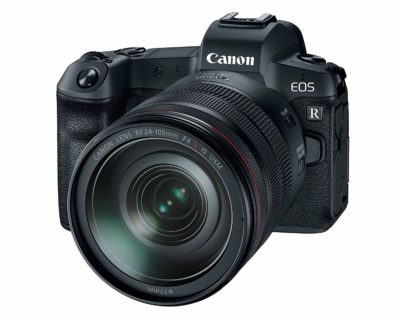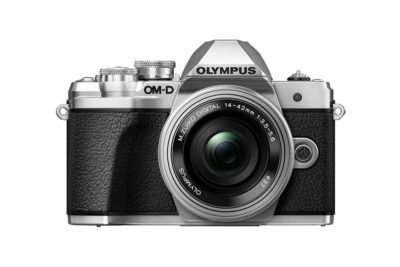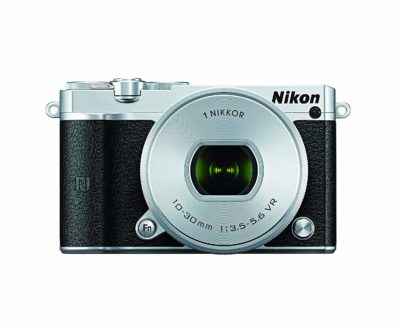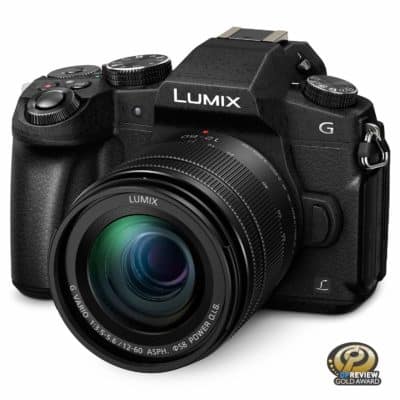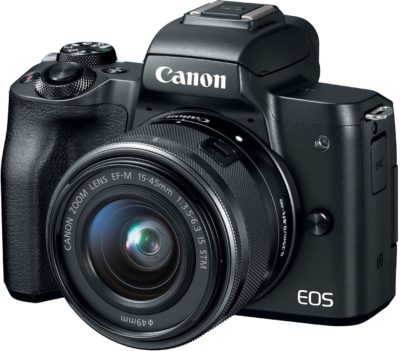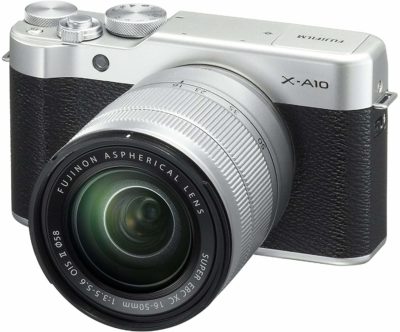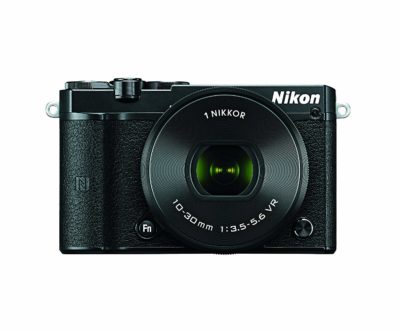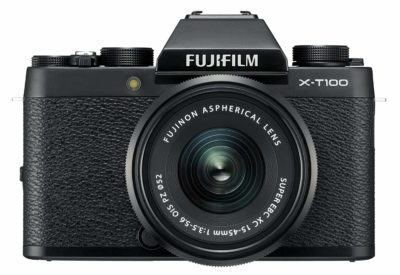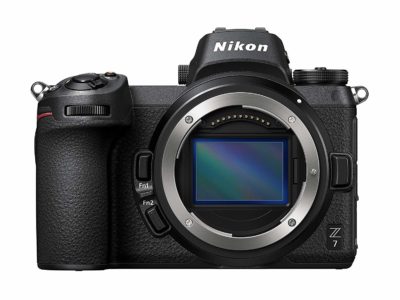Best Mirrorless Cameras For Every Photographer!
The mirrorless camera has emerged over the past few centuries to transform the way we explore our world, preserve information, and make the most out of our creativity in a way that we could only dream of.
Its unique ability to let us capture moments conveniently and efficiently makes it a staple in any photographer’s inventory. However, choosing the best mirrorless camera isn’t a simple task, considering the vast diversity of brands and models in today’s market.
Most world-renowned brands have recognized its role in our everyday lives, and have consequently jumped into the stiff competition. This virtually makes the whole decision-making process a nightmare for most first-time buyers.
This guide will take you through all you need to know about mirrorless cameras to have a well-informed decision. We’ll lay the foundation with a look at how a simple camera works and How lens work before moving to the key things you need to consider before committing to any model. Lastly, we’ll take a look at some of the best models in today’s market and FAQs Let’s get started.
9 Best Mirrorless Cameras
| Product | Best Price |
|---|---|
Powerful optics | |
Great lens and sensor | |
Built for portability | |
Powerful optical system | |
Ultra-reliable | |
Elegant design | |
Convenient | |
Portable | |
Durable |
How Cameras Work: The Basic Principle of Operation
There are three principal elements which make up the still film camera, and these are:
- The optical element( which is the lens),
- The chemical element(which is the film), and
- Mechanical element (which is the camera body itself).
The only challenge in camera design can bring all these components together in a way that achieves a crystal clear image.
As you would expect, there are a variety of ways in which this is made possible. The following few minutes will be spent on the manual lens reflex camera. It will set the foundation for our understanding of the mirrorless camera in terms of how it operates and how it’s different from the standard camera in terms of setup.
The SLR camera allows the user to see the exact image and control the key parameters by a series of dials and buttons. Since the camera doesn’t require any sort of electricity to sustain its processes, it affords a great illustration of the key processes in photography.
The lens constitutes the camera’s optical element. It is essentially a piece of glass that’s curved in the middle and has the fundamental property of being able to redirect beams of light to a single point, or away from each other depending on its overall shape. This allows it to be able to take the beams of light which are reflected from a particular object and form an image on the opposite end.
But how exactly can a simple piece of glass do this?
The mechanism is quite straightforward. Light changes speed when it travels from one medium to another. In the Lens case, light travels from the surrounding air into the Lens glass, and since it travels faster in the air than it does in glass, it slows down.
When the light beam strikes the Lens glass at a particular angle, the front part of the wave strikes the glass first and thus will be the first to slow down. This creates a scenario where one part of the beam is traveling at a slower rate than the other. This causes the beam of light to bend and change direction. Again, when the beam is exiting the glass, it bends further, as the speed changes again due to change of the medium of travel from glass to air.
Lenses can be classified into convex and concave lenses based on the general shape. Convex lenses are wide in the middle to form a slightly oval shape, whereas concave lenses are the complete opposite; they are thin in the middle and wide on the peripherals.
These have different effects on the incoming light rays. For convex lens, incoming rays bend toward the middle once they hit the surface while as concave lens direct the rays outwards.
Most advanced cameras allow you to attach a different set of lenses to let you have different magnifications. Its overall focal length defines the lens’ power. The term “focal length” describes the distance between the Lens and the formed image. The higher the focal length, the greater the Lense’s magnification capacity.
Lenses occur in a myriad of types which are appropriate for different use cases. For instance, if you want to take pictures of large scale objects, such as a mountain range, you may need to use a more powerful lens (large focal length).
Cameras deal with this by utilizing lenses with a variety of materials. Each lens handles the colors differently, and with an ideal combination, each color is aligned correctly to form a perfect image.
Most cameras come with the zooming functionality, which allows the user to enlarge or reduce the image’s size to an appropriate level. This is made possible through a mechanism which allows for moving the Lens back and forth, thus altering the focal length.
Operation
Having looked at the general functioning principle and the Lens as a key component of the camera, let’s now consider the different parts of the camera
The aperture and Iris diaphragm
The Camera’s Iris Diaphragm and Aperture allow us to control how much light reaches the lens of the camera. The word “aperture” refers to an opening which is usually placed on the front part of the camera.
The Iris diaphragm consists of a series of thin metal plates which move over each other to either increase or reduce the size of the opening. You can think of it as the Iris of your eye, which expands or shrinks to alter the size of the opening, which in turn alters the amount of light going in.
The film
The film is the surface where the image is formed. It is a specially prepared surface which is extremely sensitive to light due to the presence of compounds known as light grains. Once the light rays pass through the lens, they converge and form an image of the object on the film.
On the film, the parts which are in direct contact with the image’s light rays react accordingly, thus forming an exact copy of the image.
The size of the light grains defines the film’s capacity to form images. You can have an idea of the light grains size by looking at the films speed, which is usually indicated on the film’s canister.
Some films need a higher degree of light exposure to react significantly, while other films require lower amounts of exposure. For instance, the 100 ISO film is considered ideal in relatively higher exposures such as in bright sunlight, whereas the 1600 ISO film is considered ideal in low light environments.
The shutter: controlling the film’s exposure to light
The film cannot be continuously exposed to light. Otherwise, the whole film will just react to the exposure, thus causing no perceivable image at all. The amount of light reaching the film and length of exposure should be controlled. Too little exposure to light will lead to a darker image, while as too much exposure will lead to a brighter image.
The Shutter is responsible for controlling the film’s length of exposure to light. The majority of cameras use what’s known as the Focal Plane Shutter, which is placed between the film and the lens. The shutter consists of two layers of curtains, whereby one is placed in front of the other.
When you press the capture button, the first curtain opens, thus letting light from the Lens reach the film. The second layer controls the length of exposure by sliding in to stop the exposure after a designated period. The Shutter speed knob allows you to determine the film’s length of exposure.
This seemingly simple process is driven by a series of tiny gears, springs, and switches just like you might observe in a watch. Pressing the camera’s shutter button allows you to release a lever, which activates several gears which ultimately leads to the opening of the first curtain.
The shutter speed knob allows you to control the second curtain’s timing by working on a series of springs, which fine-tune the gear mechanism to a desired length of time between the opening and closing of the two curtains.
Setting the knob to a slower speed implies having the shutter opened for a longer period, whereas the opposite implies lengthening the total amount of time of exposure.
The light meter
As you might have observed, there are quite some parameters you need to control to achieve the ideal light exposure. You will need to have a way to make sure the size of the aperture, film speed, and shutter speed are well balanced to achieve the ideal exposure.
To simplify this process, most cameras incorporate a form of a light meter to automate the process fairly. The meter features a set of light sensors, which detect the light energy and express it as electrical energy, which is then interpreted based on the aperture’s size, shutter speed, and other relevant parameters.
The mirror and prism
Single-lens cameras incorporate a mirror, which is usually placed in front of the film. When the shutter is closed, the mirror reflects the light rays from the Lens towards a set of special glasses called a prism. The prism reorients the light rays before reflecting it towards a viewing component known as the Viewfinder.
Viewfinder
This is the viewing piece at the back of the camera, which allows you to look at the image as you are adjusting various parameters.
The Mirrorless Camera: How is it different?
As the name suggests, mirrorless cameras eliminate the mirror, which is a key component of SLR and DSLR cameras. They replace the prism and viewfinder with an imaging sensor and an Electronic Viewfinder.
The imaging sensors detect the presence of an image formed by the light rays from the lens, which is then interpreted by the electronic Viewfinder. The lack of extra components makes mirrorless cameras considerably smaller and lighter than SLR and DSLR cameras.
Here is a basic illustration of the fundamental differences between mirrorless and DSLR cameras. As illustrated by the picture above, you can easily observe that the DSLR camera incorporates more components such as the Pentaprism and Condenser Lens.
Let’s have a quick walk-through the path on which the light rays through the mirrorless camera to have a clear idea on how it operates.
- Light passes through the aperture and lens
- It travels through the shutter to the image sensor.
- The electronic Viewfinder finder reproduces the image detected by the sensor.
Mirrorless
Pros
- Mirrorless cameras are typically smaller and lighter.
- They tend to have richer Viewfinders in terms of information. Electronic Viewfinders tend to come with more settings and information aids such as histograms, white balance, contrast, and saturation.
- They provide an easier method of achieving the best focus with greater precision.
- The electronic Viewfinder provides a more effective way of reviewing images in daylight conditions.
Cons
- They can only function when there is a reliable power supply, such as a battery. The battery life can also be affected by the number of features you activate in the process.
- Due to the image processing, they tend to come with a lag, and may also come with high contrasts which may be hard for some users.
- They may not produce the best quality when it comes to fast action in low light conditions.
Buying guide
Though with some obvious disadvantages, mirrorless cameras still afford a highly reliable and ultra-efficient tool for most photographers. Now let’s take a look at the key factors you need to look into before buying any model.
Consider the Lenses
Landing a high-resolution camera with a Megapixel rating won’t necessarily save you from the destructive effects of a low-quality lens. Greater resolutions will only highlight the lens’ optical shortfalls.
On the other hand, great lenses allow you to make the best use of a powerful camera sensor by achieving exceptionally sharp focus. It’s a well-known observation that a camera with a lower pixel rating and a powerful lens affords greater clarity than a highly rated camera which features an average lens.
With this in mind, the lens should be the first factor you need to consider during the decision making the process.
Consider the probable Image Quality
The quality of the image produced by the camera mostly comes down to the person who is controlling it. This is why photography is a skill that must be acquired through persistent effort. In fact, the world’s elite photographers are capable of capturing exceptional imagery using basic cameras. They are individuals who know exactly how to go about maximizing the utmost potential of any circumstances and find their way around the associated limitations.
However, though this is the case, the camera shouldn’t really impinge on your creativity, thus making it imperative to consider the resolution. The great news is that most mirrorless cameras manufactured today come with enough resolution to produce professional-quality photos. Therefore it’s never a futile effort to look for the best possible resolution for your lens, and of course the budget.
The size of the sensor
The size of the sensor heavily influences the depth of field. Different formats with varying sensor sizes will have different depth of fields, even if the focal range and aperture remain constant.
To sum up, larger sensors, which also come with higher pixel ratings, achieve greater amounts of detail for shallow depth of fields. On the contrary, a deeper depth of field requires a smaller sensor to achieve greater amounts of detail.
General functionality and additional features
Mirrorless cameras tend to incorporate a range of features aimed at simplifying most of the tasks to keep you focused on producing the best possible quality. For instance, gone are the days when you had to stand beneath a shade to review your images on the screen.
Most credible mirrorless models on today’s market offer exceptional EVFs to allow for convenient viewing. In this case, the camera eliminates the effect of light through the viewfinder, which is essentially sealed from any reflections which affect the image’s visibility. As explained earlier, most mirrorless cameras incorporate additional features such as histograms, exposures settings, and checking critical focus.
Other convenient features include focus peaking, shooting mode, silent electronic shutter, time-lapse, Wifi connectivity, and touchscreen autofocus. Though they may look like a bunch of luxuries, these seemingly little additions can easily make the difference between an average and a memorable photo shooting experience.
If you are not so good with the depth of field, the electronic Viewfinder offers a great advantage. Ideally, as you are viewing the image while adjusting your Aperture, the EVF provides a real-time visual of how the depth of field will affect the image.
This significantly simplifies your ability to set the necessary parameters for each shot. Therefore, it’s imperative to check with every model if it provides the ideal range of functionality. The greater the number of features, the better.
Size and Weight
As we discussed in previous sections, Mirrorless cameras are significantly lighter than DSLR cameras, thus making them less of a commitment when it comes to packing it and carrying it around on an adventure.
However, the sizes can still differ from appealing to different use cases. In general, the lighter, the better, but make sure that you don’t necessarily sacrifice the quality and effectiveness for size.
Instead, it’s safe to go for a model that offers the best performance for your money, while making you as comfortable as possible without having to live other important things behind because of size and weight.
Power features
Due to the intensive power demand by the EVF, mirrorless cameras generally need a more solid source of power than DSLRs.
Though it’s possible to carry some spares to keep things reliable, it’s always prudent to check on the power consumption and what the reviews are to have a practical idea of the camera’s energy efficiency. Any consistent complaints relating to power consumption and the battery system should be treated as a red flag.
Durability
To maximize durability, some models incorporate additional features such as 100% water, dust, and freeze resistance. This is something to look into if you foresee using the camera in aggressive conditions.
In addition to superior physical qualities, make sure that the functional system provides the same level of durability. This goes along with making sure that you get a proven model from a trusted manufacturer.
Warranty
Warranty shields you from losing any money from defective products. Credible manufacturers will always attach a warranty package to ensure that you get exactly what you paid for.
These can range from a few months to years and may be limited to a manufacturer related defects or cover a lot more. In general, the more comprehensive it is, the better, as it means that you are better covered by the associated risks.
10 Best Mirrorless Cameras
1. Canon EOS R Mirrorless Digital Camera – Powerful optics
If you are in to invest a little more on a high-end beast of a camera, the Canon EOS R has a lot in store to warrant some careful consideration. Most consider it the perfect combination of reliability and performance, as evidenced by the superior construction and an impeccable functional feature set.
- Weight and size – The camera measures at (5.35 x 3.87 x 3.32 in.) and weighs at around 660g(including the battery and other accessories such as the SD card).
- Type – Digital single-lens non-reflex AF/AE camera
- Compatible Lenses – All canon RF lens group except EF, EF-S and EF-M lenses.
- Lens Mount – Canon RF mount
- Image Sensor type – CMOS sensor.
- Effective pixels – 30.3 Megapixels
- Dust cleaning Features – Self Cleaning Sensor Unit
- Recording System – Recording Format: EXIF 2.3 (DCF2.0), Raw, and JPEG formats.
- Viewfinder – Type: OLED color electronic viewfinder
- Shutter – Electronically-controlled focal-plane shutter
- Shutter Speeds – 1/8000 to 30 sec.
- Power features – LP-E6N battery pack, can also use AC through the AC and DC couplers, Charge time: 8 hours.
- It a highly versatile device that is capable of exceptional performance in a wide range of use cases.
- It harbors one of the most powerful lenses and sensors on the market.
- User-friendly: It provides for a comprehensive set of controls and all the convenience features to keep things easy.
- It features a powerful electronic viewfinder, and live preview.
- It features a powerful battery system for prolonged battery life.
- Hefty price tag.
- It has a prolonged charge-time
2. Olympus OM-D E-M10 Mark III Mirrorless – Great lens and sensor
The Olympus M10 embodies another great combination of performance and reliability. A great list of reviews backs up its rather impeccable feature set. Let’s have a look.
- Weight and size – Its footprint measures W:121.5mm H:83.6mm D:49.5mm while as the weight lingers at around 410 grams.
- Type – Digital single-lens non-reflex AF/AE camera
- Sensor – Sensor Type: 4/3? Live MOS Sensor
- Dust Reduction mechanism: Supersonic Wave Filter
- Processor – Olympus TruePic VIII.
- Image Stabilization – Stabilisation System Type: Built-in 5-axis sensor-shift image stabilization.
- Stabilization Performance – 4.0 EV steps(Based on CIPA measurement conditions)
- Shutter Type: Computerized focal-plane, high-speed mechanical shutter Silent electronic shutter
- Shutter Speed: Mechanical Shutter: 1/4000 – 60 sec. (1/3 EV steps selectable), Electronic shutter (Silent mode): 1/16000 – 30 sec
- Viewfinder – Type: Eye-level electronic viewfinder.
- Connectivity – USB 2.0, wifi(IEEE 802.11 b/g/n), HDMI(D)
- Battery Life – 80 minutes for movies, 140 minutes when zooming and other functions are not included.
- It incorporates a powerful sensor and lens.
- It incorporates a great array of feedback mechanisms such as an amply featured electronic Viewfinder.
- It features an abundance of convenience features.
- Impressive power supply system.
- It comes with a hefty price.
3. Nikon FX Z6 – Built for portability
The Nikon FX Z6 exemplifies the brand’s commitment to great designs and powerful technology. Though not as affordable as most devices, it does have a lot to show for it. Let’s have a look at the specs.
- Weight and size – The camera body measures 5.3 in x 4 in x 2.7 in while as the weight measures at around 586 grams.
- Cameras Type – Digital mirrorless with interchangeable lenses
- Lens Mount Type – Nikon Z mount
- Viewfinder – Type: 1.27-cm OLED piece featuring color balance, auto, and brightness controls with 11 level adjustment mechanism.
- Frame Coverage – 100 vertical and horizontal coverage, Magnification: 0.8x, Eyepoint: 21 mm, Diopter Adjustment: -4 to +2 m?1
- Shutter Type – Electronic and mechanical shutter.
- Autofocus System – Hybrid phase-detection Autofocus with AF assist
- Focus Point – 273 single-point Autofocus.
- Stability – 5-axis image sensor shift.
- Connectivity – USB Type-C, HDMI, Audio input/output, Wifi IEEE 802.11 (b,g,n,a,ac) Bluetooth 4.2. : Type C
- Battery Life – approximately 310 shots after a single charge(CIPA). Up to 85 minutes per movie recording.
- It features a powerful image sensor and versatile Lens mount for more flexibility.
- It is highly energy-efficient.
- Comprehensive connectivity options list.
- The highly efficient focusing system
- The comprehensive feature set comes with an inflated price tag.
- No image preview feature
4. Panasonic Lumix G85 – Reliable
The Lumix furnishes a highly advanced feature set and design for both professionals and amateur level photographers. A highly efficient Lens sensor system and an abundant supply of modern functional features are some of the highlights. Let’s take a closer look.
- Size and weight – The frame measures 7.4 x 12.9 x 8.9 cm in terms of dimensions, and weighs at around 503 grams.
- Type – Digital Single Lens Mirrorless camera
- Recording media – SD Memory Card, SDHC Memory Card, SDXC Memory Card
- Connectivity – WiFi IEEE 802.11 a/b/g/n, USB 2.0, 2 external microphone inputs.
- Power – Battery life up to 330 images. Power saving mode extends the life to 800 images.
- Viewfinder – Type: OLED Live View Finder (2,360k dots), Field of view: 100%, Magnification: 1.48x / 0.74x
- Focusing system – Type: Contrast AF system with DFD technology, AF detective range: Other features: Post Focus, Focus Stacking, Single Focus mode.
- Shutter – Type: Focal-plane shutter.
- The powerful Lens and sensor complete a rare optics set.
- It is easy to handle and incorporates a great set of convenience features.
- It comes in an ultra-durable construction.
- Great battery and energy efficiency features.
- The battery life could be better
- The autofocus feature is not up to the mark
5. Canon M50 EOS – Ultra-reliable
This camera proves another good reason why the Canon brand is easily accepted as a global leader in mirrorless cameras and electronics. It is highly versatile and does not necessarily lack the extra touch of class type of top-notch devices.
- Image Sensor – Type: 22.3 x 14.9mm CMOS
- Effective Pixels – 24.1 megapixels
- Total number of Pixels – 25.8 megapixels
- Aspect Ratio – 3:2
- Filter – In-built
- Cleaning – EOS inbuilt cleaning system.
- Processor Type – Digic 8.
- Lens – Lens Mount: EF-M, Focal Length: Equates to 1.6x the lens’ focal length, Image Stabilisation
- Focusing – System Type: Dual Pixel CMOS AF System. Phase detection merged on the imaging sensor; Contrast detection deployed when using 4K Movie Servo AF.
- Exposure control – Metering modes: It features four metering modes, including Evaluative, partial, center-weighted, and spot metering, Metering Range: EV 0-20.
- Shutter Type: Electronic focal-plane shutter
- Viewfinder – Viewfinder Type: 0.39-type OLED Electronic Viewfinder, Coverage: Vertical, and Horizontal/100%.
- Connectivity – Micro USB, Wireless LAN (IEEE802.11b/g/n), Bluetooth 4.1, HDMI Type D.
- Power source: Rechargeable Li-ion Battery LP-E12
- Battery life: Up to 235 shots. Extendable to 370 shots in eco mode.
- It features a highly efficient lens and image sensor system.
- Solid construction with superior build material.
- It is compact, lightweight, and travels friendly.
- It features a highly versatile system with an edge in both image and video processing.
- The viewfinder lacks magnification features.
- It comes with a high upfront cost.
6. Fujifilm XA10 – Elegant design
The Fujifilm XA10 provides a beautifully made device that doesn’t fall any short of the key qualities of any top-notch device. It provides for a well-balanced, functional feature set along with the great size and overall design. Let’s get into the details.
- Size and weight – 116.9(W) mm x 67.4 (H) mm x 40.4(D) mm, Weight: 331g.
- Number of effective pixels – 16.3 million pixels
- Image sensor type – 23.6mm x 15.6mm (APS-C) CMOS with primary filter.
- Sensor Cleaning system – Ultra Sonic Vibration
- Lens mount – FUJIFILM X mount
- Exposure control – TTL 256-zone metering, Multi, Spot, Average modes.
- Shutter – Type: Focal Plane, Speed: Mechanical (4 sec. to 1/4000 sec.), electronic shutter ( 1 sec to 1/32000).
- Connectivity – Wifi IEEE 802.11b/g/n, USB 2.0, HDMI (Type D).
- Power – Battery life: 410 frames.
- It harbors one of the most powerful sensors on the current market.
- It provides for one of the most cohesively built and reliable systems.
- Adequate connectivity tools.
- High quality still and motion image output.
- Efficient power supply system.
- The reasonable price tag for most mid-range budgets.
- The focus tends to be slower than other competitors within its price range.
7. Nikon 1 J5 Mirrorless Digital Camera – Convenient
The Nikon 1 J5 mirrorless camera provides a great model if you are in for a highly portable but yet surprisingly powerful camera. It is also known for its durable system and physical makeup as one of the most popular models on the current market. Let’s take a walk through the key features before we move to the associated pros and cons.
- Weight and size – The camera body measures 3.9 in x 2.4 in x 1.3 in while the weight lingers at around 231 g.
- Camera Type – Digital mirrorless with interchangeable lenses
- Lens Mount type – Nikon 1 mount
- Shutter Type – Electronic shutter.
- Top Continuous Shooting Speed at Full Resolution – 20 frames per second
- Exposure System – TTL metering using the camera image sensor
- Metering Method – Matrix, Center-weighted, and spot metering.
- ISO Sensitivity – 160 – 12800.
- Connectivity – USB 2.0, HDMI, Wireless Mobile Utility(WMU).
- Power – Battery: One Li-ion battery (EN-EL15b), Battery Life: approximately 250 shots after a single charge(CIPA). Up to 60 minutes per movie recording.
- It features a Portable and highly practical frame.
- It features a powerful lens and sensor for its size.
- It features highly durable construction.
- Energy-efficient power supply system.
- It may not be suitable for highly professional use cases as it lacks extra focusing and customization features.
8. Fujifilm X-T100 – Portable
The X-T100 provides a great alternative to the previous model as another powerful combination of superior craftsmanship and efficiency. The great design is adequately backed up by a solid reputation.
- Size and weight – 121.0 (W) mm x 83.0 (H) mm x 47.4 (D) mm, Weight 448g
- Number of effective pixels – 24.2 million pixels
- Image sensor type – 23.5mm x 15.7mm (APS-C) CMOS with primary color filter.
- Sensor Cleaning system – Ultra Sonic Vibration
- Storage options – SD, SDHC, SDXC Card.
- File format – Still images: JPEG, RAW (RAF format), RAW+JPEG, Movie File Format: MOV
- Lens mount – FUJIFILM X mount
- Shutter – Type: Focal Plane, Speed: Mechanical (4 sec. to 1/4000 sec.), electronic shutter ( 1 sec to 1/32000).
- Connectivity – Wifi IEEE 802.11b/g/n, Bluetooth 4.1, USB 2.0, HDMI (Type D).
- Power – Battery life: 430 frames, Up to 170 mins for 4k videos.
- Impressive sensor and lens system.
- Durable system and construction.
- Comprehensive connectivity options.
- Impressive image output.
- Long battery life.
- Affordable price tag.
- Limited touchscreen functionality.
9. Nikon z7 – Durable
The Nikon Z7 basically affords more features when compared to the Nikon 1 J5 for those looking for a little more from a similar-sized camera. A powerful lens and sensor system is supported by a wealth of convenience features. Let’s take a look.
- Weight and size – The frame measures at around 5.3 in x 4 in x 2.7 as the weight measures at 585 g.
- Cameras Type – Digital mirrorless with interchangeable lenses
- Lens Mount type – Nikon Z mount
- Shutter Type – Electro-mechanical shutter.
- Compatible lenses – Z mount NIKKOR lenses, F mount NIKKOR lenses with the mount adapter.
- Exposure System – TTL metering using the camera image sensor
- Metering Method – Matrix, Center-weighted, and spot metering.
- Highest Standard ISO Sensitivity – 25,600
- Connectivity – IEEE 802.11 B/g/n/a/ac, USB Type C, HDMI type C, Bluetooth 4.2, Audio input and output.
- Focusing – Hybrid phase-detection/contrast AF with AF assist
- Power – Battery Life: approximately 330 shots after a single charge(CIPA). Up to 85 minutes per movie recording.
- It comes in with an ultra-powerful lens and sensor for a device of its size.
- It comes with a powerful Viewfinder and a wide range of feedback mechanisms for greater convenience.
- It features a reliable and solid construction.
- Impressive connectivity profile to cover for almost all the connectivity needs.
- The extra functionality comes with an inflated price tag.
Frequently Asked Questions
1. What’s the best camera model around?
As you can see from our product review above, there are quite some models offering almost every feature you may need as both an amateur or professional user. However, you may not necessarily need a high-end model to get things done. This should get you closer to your best model.
2. Do I really need to know all the intricacies of a camera to get something meant for general usage?
You don’t always need to know every bit of detail about each camera as this is mostly impractical for most users. However, trying your best to know a little bit more gives your choice an edge.
Conclusion
Recognizing the best camera for your needs comes with sound knowledge on the key drivers of a basic camera’s functionality.
The first step to this is getting to grips with the essential elements and processes of a basic camera system. This allows you to understand the factors that really matter when carrying out the decision-making process.
The models discussed above should give a good caption of what you can expect from the market.





